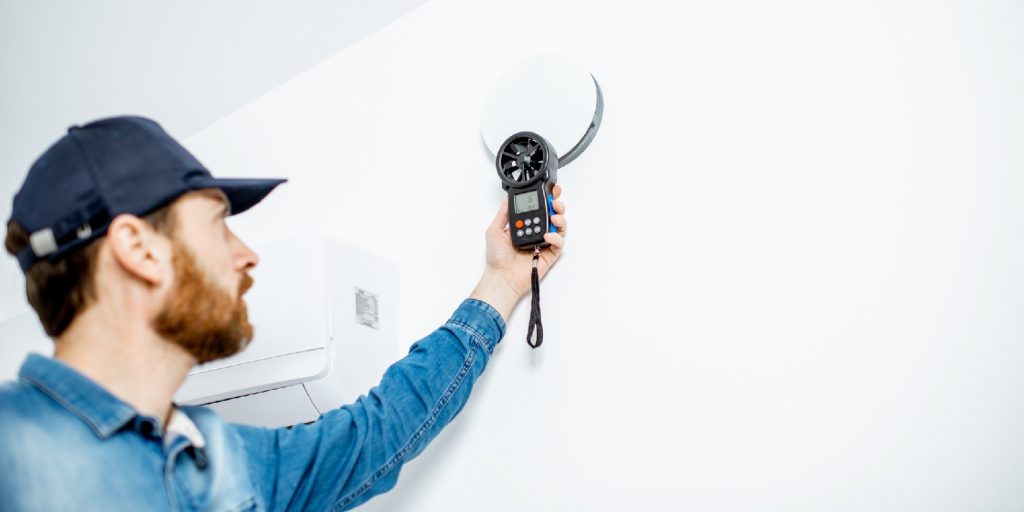How To Ensure Your Workshop’s Air Is Safe

In this blog, we will discuss the importance of air quality testing, the common pollutants found in workshops, and the steps you can take to ensure your workshop’s air is safe.
Understanding the Importance of Air Quality Testing
Air quality testing is the process of evaluating the composition of the air within a space to identify harmful substances or pollutants. In a workshop setting, various activities such as welding, painting, sanding, and working with chemicals can release hazardous substances into the air.
These pollutants may include volatile organic compounds (VOCs), particulate matter, fumes, dust, and gases, which can pose serious health risks when inhaled over an extended period. Regular air quality testing helps identify potential issues and allows for prompt remediation to protect the health and well-being of workshop employees.
Common Pollutants in Workshops
Workshops can harbor a range of common pollutants that negatively impact air quality. Some of the main culprits include:
Volatile Organic Compounds (VOCs): These are emitted as gases from various materials and products used in the workshop, such as solvents, adhesives, paints, and cleaning agents.
Particulate Matter: Fine particles generated from sanding, grinding, and cutting can become airborne and pose a respiratory hazard.
Welding and Soldering Fumes: These fumes contain toxic metals and gases that can cause serious health issues when inhaled.
Dust and Debris: Accumulation of dust from woodworking, machining, or other operations can irritate the respiratory system and lead to allergies or respiratory conditions.
Carbon Monoxide (CO): Generated by fuel-burning equipment like generators or machinery, high levels of CO can be life-threatening.
Steps to Ensure Workshop Air Safety
Schedule professional air quality testing at regular intervals to assess the levels of pollutants in the workshop. This should include the measurement of VOCs, particulate matter, carbon monoxide, and other relevant pollutants. Next, ensure the workshop is adequately ventilated to exchange indoor and outdoor air. This can be achieved by installing exhaust and shop fans, windows, or air ventilation systems. Use dust collection systems, local exhaust ventilation, and proper cleaning practices to minimize the release of dust and debris into the air.
Store chemicals in appropriate containers and cabinets and follow safety guidelines. Use them in well-ventilated areas, and adequately train employees or people in the workshop regarding their safe handling: Provide them with suitable respiratory protection, such as masks or respirators, especially when working with hazardous substances or in areas with poor air quality. Lastly, ensure that all machinery and equipment are properly maintained to minimize emissions and leaks contributing to poor air quality.
Ventilation is paramount to maintaining healthy air quality in the workshop. Close the doors and windows when operations such as welding or cutting are in progress, as they release hazardous fumes. Make sure all doorways and windows are properly sealed and maintained to prevent any air leakage. Additionally, ensure that any dust-dispersing operations are contained in hoods connected to proper filter systems.
Good housekeeping is also a critical factor in maintaining good air quality. Regularly clean the work area and all tools used to minimize the accumulation of dust and debris. Additionally, all materials used, such as liquids, abrasives, and flammable substances, should be properly stored in airtight containers or closets.
Another important step to maintaining healthy air quality in the workshop is to perform regular maintenance on all machinery and equipment used. Change filters regularly, inspect and replace worn or damaged hoses, and ensure the exhaust systems are fully functional. This helps reduce the emission of particles, fumes, and gases into the air.
Furthermore, evaluate the environment periodically and consider a portable air tracking system if needed. It can be used to monitor different pollutants in the workshop. By looking at the results, it is easy to know when it is time to take additional steps to improve the air quality in the workshop.
Finally, take the necessary steps to protect yourself and others from harmful pollutants in the air. Make sure everyone working in the workshop is equipped with the appropriate breathing protection, such as respirators, dust masks, or air-purifying masks. Also, provide training on hazardous materials, as well as safety information on proper handling. By taking all these steps, you can avoid the potential health risks associated with poor air quality in the workshop.
Conclusion
In conclusion, ensuring the air quality in your workshop is safe is a fundamental aspect of workplace safety and well-being. By conducting regular air quality testing, identifying common pollutants, implementing control measures, and fostering a safety culture, you create an environment where you and others can thrive. Prioritizing air quality protects your health and others and contributes to increased productivity and peace of mind.
